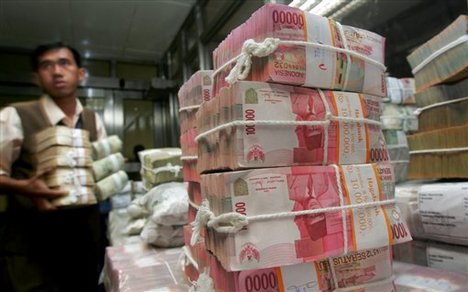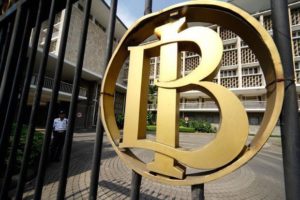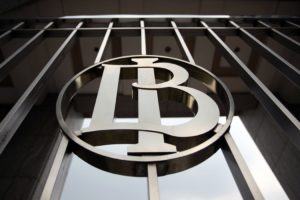GDP..jpg" />
Indonesia’s external debt at the end of Q4 last year stood at USD317.0 bln or 34.pct over GDP.
Jakarta, 21 Jumadil Awwal 1438/18 February 2017 (MINA) – Indonesia’s external debt in Q4/2016 grew at a slower pace than Q3/2016 in line with a slowdown in long-term external debt growth.
Indonesia’s external debt at the end of Q4/2016 grew 2.0% (yoy), lower than the previous quarter growth of 8.2% (yoy). Based on original maturity, the slowing growth was affected by a slowdown in long-term external debt, while short-term external debt increased, Bank Indonesia (BI) said in a release issued on Friday (17/02).
Also Read: Saudi Arabia Wins Bid to Host World Expo 2030
Based on the group of borrowers, the slowing growth stemmed from a slowdown in public sector external debt and a contraction in private sector external debt.
With this development, the Indonesia’s external debt position at the end of Q4/2016 stood at USD317.0 billion or 34.0% over GDP, lower than 36.2% over GDP at the end of Q3/2016 and 36.1% over GDP at the end of 2015.
Based on original maturity, Indonesia’s external debt position was dominated by long-term external debt. Long-term external debt at the end of Q4/2016 reached USD274.9 billion (86.7% of total external debt) or grew 1.1% (yoy), slower than the previous quarter growth of 8.7% (yoy).
Meanwhile, short-term external debt at the end of Q4/2016 amounted to USD42.1 billion (13.3% of total external debt) or grew 8.6% (yoy), higher than the previous quarter growth of 4.6% (yoy).
Also Read: 148 Products from Indonesia Promoted at Sarawat Superstore Jeddah
Although short-term external debt increased, the ability of reserve assets to cover short-term liabilities improved, as reflected in the ratio of short-term debt to the reserve assets fell from 37.4% in Q3/2016 to 36.1% in Q4/2016 in line with the increase in reserve asset position, the central bank said.
Based on the group of borrowers, the external debt position was dominated by private sector external debt. The private sector external debt position at the end of Q4/2016 was recorded at USD158.7 billion or 50.1% of total external debt.
Meanwhile, the public sector external debt position stood at USD158.3 billion or 49.9% of total external debt.
The private sector external debt down 5.6% (yoy) at the end of Q4/2016, deeper than 2.0% (yoy) decline in the previous quarter. Meanwhile, public sector external debt grew slower at 11.0% (yoy) in Q4/ 2016 compared to 20.8% (yoy) growth in the previous quarter.
Also Read: Packaging Industry Supports Halal Ecosystem
In the private sector, the external debt position at the end of Q4/2016 was concentrated in the financial, manufacturing, mining, and electricity, gas and water supply sectors.
The shares of these four sectors to total private sector external debt reached 76.6%. Compared to the previous quarter, external debt growth of financial, manufacturing, and mining sectors declined, while the external debt growth of the electricity, gas and water supply sector decelerated.
Remains healthy
Also Read: Indonesia-Japan Agree on Energy Transition Cooperation
Bank Indonesia views the development of external debt at the end of Q4/2016 remains healthy but continues to be vigilant about the risks to the national economy.
Moving forward, Bank Indonesia will persevere to monitor the development of external debt, particularly the private sector external debt.
It is intended to give assurance that the external debt can play an optimal role in supporting development financing without incurring the risks that may affect macroeconomic stability. (T/RS05/RS01)
Mi’raj Islamic News Agency (MINA)
Also Read: Dubai Expo 2020 Holds Special Event for Palestine



























![MUI Chairman for Foreign Relations and International Cooperation, Sudarnoto Abdul Hakim (center) at the One Million Women for Gaza Press Conference entitled "Women Boycott Pro-Israel Products" held at the Swiss-Belinn Cawang Hotel, East Jakarta, Thursday (3/7/2025). [Photo: Arina/MINA]](https://en.minanews.net/wp-content/uploads/2025/07/20250703_144042-scaled-1-300x225.jpg)





 Mina Indonesia
Mina Indonesia Mina Arabic
Mina Arabic